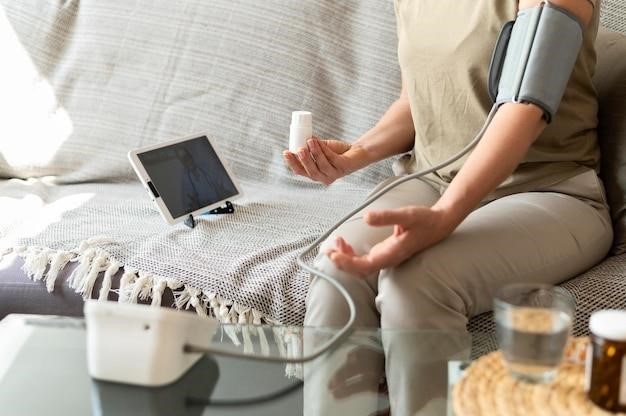Cake Transportation
Handle your cake with care! Support it firmly with both hands, keeping it level. Refrigerate for travel to maintain firmness. Drive carefully to prevent damage during transport. Avoid extreme temperatures and direct sunlight.
Safe Handling Techniques
When transporting your delicate cake, remember to prioritize gentle handling. Always use both hands to support the cake and its board, ensuring the cake remains perfectly level throughout the journey. Avoid any sudden movements or jarring actions that could compromise the cake’s structural integrity. If carrying the cake over a significant distance, consider using a sturdy cake carrier to provide additional protection against bumps and vibrations. Keep the cake upright and away from any potential hazards, such as sharp objects or uneven surfaces, which could cause damage. Remember, a smooth, steady transport is key to ensuring your cake arrives at its destination in pristine condition, ready to be enjoyed. Handle with the utmost care and attention to detail to preserve its beautiful presentation and delicious taste.
Protecting the Cake During Travel
To ensure your cake arrives undamaged, proper travel precautions are crucial. Avoid placing the cake in direct sunlight or extreme temperatures, as heat can cause melting or structural damage. If transporting in a vehicle, secure the cake in a stable position to prevent movement. Consider using a non-slip surface to secure the cake board within the carrier. For longer journeys, refrigeration is recommended to maintain the cake’s firmness and prevent spoilage. If refrigeration isn’t feasible, choose a cool, shaded area to minimize exposure to heat. Remember to avoid sudden braking or sharp turns during travel. Upon arrival, carefully remove the cake from its carrier, handling it with utmost care to avoid any accidental damage. By following these guidelines, you can confidently transport your cake and preserve its quality.

Cake Storage
Refrigerate your cake promptly to maintain freshness. Avoid freezing. Allow time for acclimation to room temperature before serving for optimal texture and flavor.
Refrigeration Guidelines
Proper refrigeration is crucial for preserving your cake’s quality and preventing spoilage. Always store your cake in an airtight container or its original box to maintain freshness and prevent it from absorbing other odors in your refrigerator. Avoid placing it near strong-smelling items like onions or garlic. The ideal temperature for cake storage is between 35°F and 40°F (1.7°C and 4.4°C). Cakes with buttercream frosting generally hold up well in the refrigerator for 3-5 days. However, cakes with fresh fruit fillings or whipped cream may have a shorter shelf life – ideally consumed within 1-2 days. Before serving, remove the cake from the refrigerator and allow it to sit at room temperature for a period of time to let it reach its optimal texture and flavor. The time will vary based on the size and type of cake. For a layered cake, allow at least 2 hours at room temperature, while smaller cakes or cupcakes might only need 30-45 minutes. Observe the cake’s consistency; it’s ready when the frosting is soft and spreadable, and the cake is moist but not soggy.
Room Temperature Acclimation
Allowing your cake to reach room temperature before serving is essential for achieving the best flavor and texture. Refrigeration can firm the frosting and make the cake denser. Bringing it to room temperature allows the flavors to meld and the frosting to soften, enhancing the overall eating experience. The time required for acclimation depends on several factors, including the size of the cake, the type of frosting, and the ambient room temperature. Larger cakes, particularly tiered ones, will require a longer acclimation period than smaller cakes or individual cupcakes. Generally, allow at least 2-3 hours for larger cakes to reach room temperature. Smaller cakes may only need 30-45 minutes. Observe the frosting; it should be soft and spreadable, similar in consistency to softened butter. The cake itself should feel moist and tender, not overly firm or cold. Avoid leaving the cake at room temperature for extended periods, especially in warm environments, as this can lead to melting or spoilage. For best results, bring the cake to room temperature just before serving to maintain its optimal texture and flavor.
Serving Your Cake
Serve your cake at room temperature for optimal flavor and texture. Allow sufficient time for acclimation. Remove decorations before cutting and serving for a cleaner presentation.
Optimal Serving Temperature
For the best enjoyment of your cake, serving temperature is crucial. Room temperature is generally ideal, allowing the flavors to fully develop and the texture to become soft and moist. Buttercream frosting, in particular, benefits from being at room temperature; it achieves a spreadable consistency, similar to softened butter, enhancing the overall eating experience. However, the time needed for a cake to reach optimal temperature depends on several factors, including the size of the cake, the type of frosting, and the ambient room temperature. Larger cakes and those with richer frostings may require a longer acclimation period, perhaps two to three hours, to reach the perfect serving temperature. Conversely, smaller cakes or those with lighter frostings may only need an hour or less. Always check the consistency of the frosting; it should be soft and easily spreadable with a knife. If it’s still too firm, allow more time for it to warm up. Never rush the process, as a properly served cake is a delight to both the eyes and the palate.
Cake Preparation Before Serving
Before serving your exquisite cake, a few simple steps can elevate the presentation and enhance the enjoyment. If the cake has been refrigerated, allow ample time for it to reach room temperature before serving. This will ensure the optimal texture and flavor profile. Depending on the size of the cake, this could take anywhere from 30 minutes to a couple of hours. For tiered cakes, allow even more time, as the inner layers will take longer to warm up. Once the cake is at room temperature, carefully remove any cake boards or transport supports before placing it on a serving platter. If desired, add any final decorative touches at this point. Ensure your serving utensils are clean and sharp to create neat and even slices. Using a serrated knife is often recommended for cutting layered cakes cleanly. To prevent the frosting from smearing, gently wipe the knife clean between each cut. This preparation not only ensures a visually appealing presentation but also enhances the overall enjoyment of your delicious creation. Remember, attention to detail elevates the simple act of serving into a memorable occasion.

Additional Tips
Keep your cake away from direct sunlight, heat, and moisture. Proper storage and handling will maintain freshness and prevent damage.
Avoiding Direct Sunlight and Heat
Direct sunlight and excessive heat are detrimental to your cake’s delicate structure and flavor. Exposure to intense heat can cause the frosting to melt, the cake layers to become dry and crumbly, and the overall presentation to suffer. Always transport your cake in a well-insulated container, especially during warmer months. Avoid leaving it in a hot car, even for short periods. If displaying your cake outdoors, provide ample shade and consider using a cooling device to maintain a comfortable temperature. Remember, even moderate heat can negatively impact the texture and taste, so keeping your cake away from direct sunlight and heat sources is essential to preserving its quality and ensuring a delicious experience for everyone.
Maintaining Cake Freshness
To preserve your cake’s delightful freshness, proper storage is key. Once you’ve transported your cake safely, refrigerate it promptly unless you plan to serve it immediately. Refrigeration helps prevent spoilage and maintains optimal moisture levels. If serving later, remove the cake from the refrigerator 2-3 hours beforehand (or longer for tiered cakes) to allow it to reach room temperature, enhancing its flavor and texture. Avoid storing it in the freezer as this can negatively impact the buttercream and overall consistency. When storing leftover cake, ensure it’s tightly covered to prevent it from drying out or absorbing odors from other foods. By following these simple storage guidelines, you can enjoy your cake at its peak deliciousness for an extended period.



